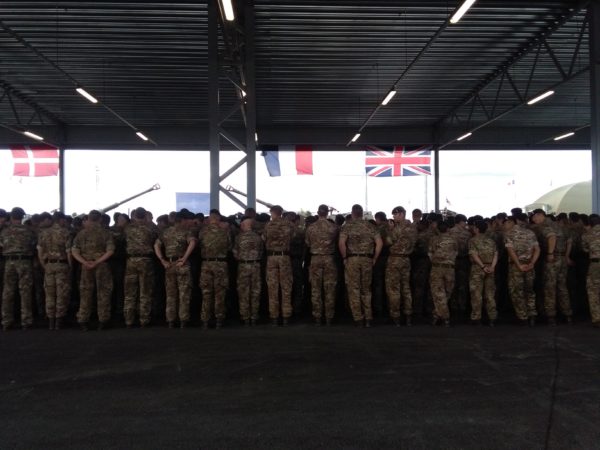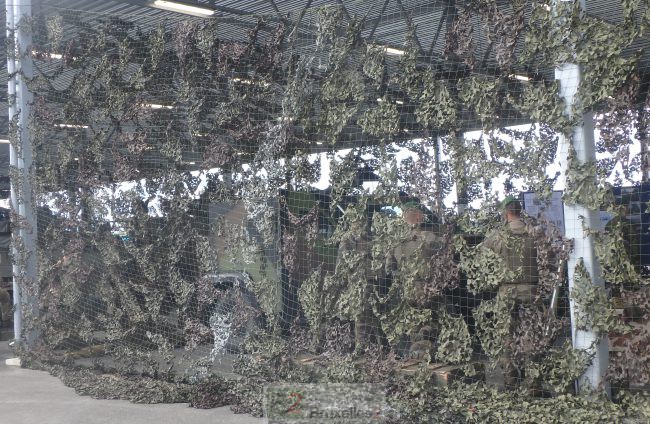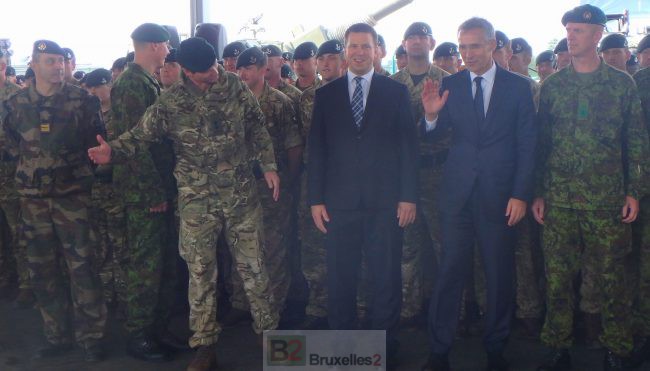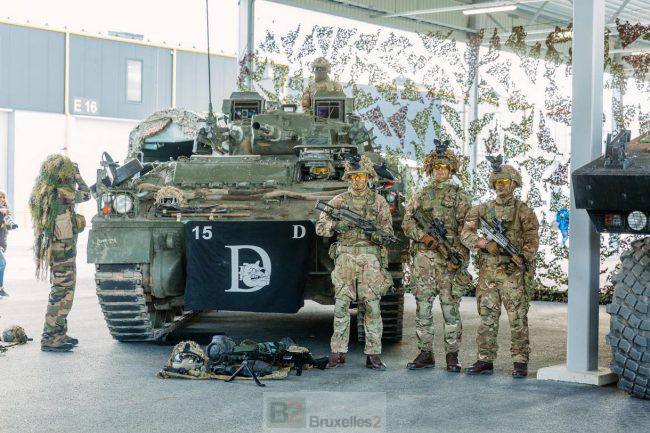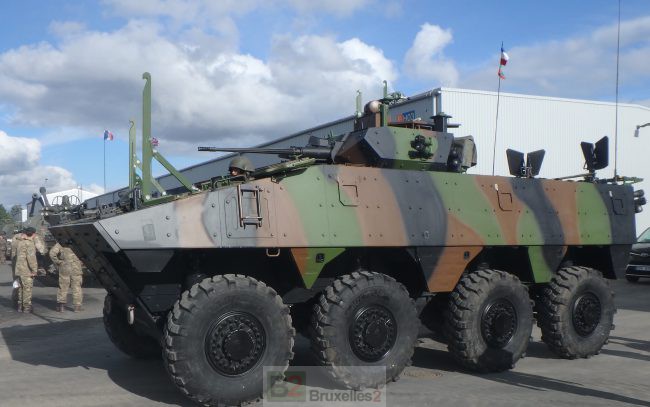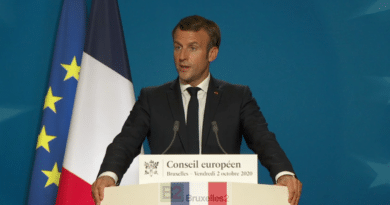Tapa: reassuring Estonia… and a great training ground
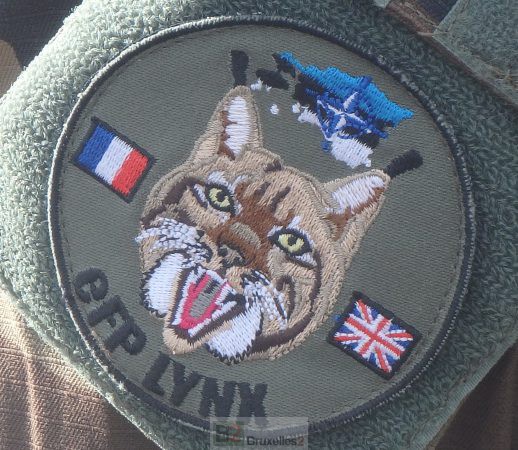
(B2 in Tapa) Several hundred British, French and Danish soldiers are present in Estonia. To do what ? What is the interest of this deployment not only at the political but also at the military level?
A reassurance measure against Russia
The reason for the deployment of "battlegroups" from all the countries of the Atlantic Alliance in the three Baltic countries and in Poland is known. This is to "reassure" the countries concerned of the Alliance's determination to ensure the defense of their territory against Russia. A measure taken after the Russian intervention in Ukraine in 2014.” Any attack on one of us is an attack on all of us NATO Secretary General Jens Stoltenberg reminded Tapa.
A political warning...
A defensive deployment to prevent conflict » and in no case for « provoke " he added, emphasizing that everything is happening " in transparency with the Russians. In fact, with some 4000 men and women spread over the four countries on the north-eastern edge of NATO's border, this deployment has more of a political warning value than a gathering of forces. On the other side of the border, in Russia, the forces are counted with an extra "0". " What counts is the signal that we send of solidarity, of deterrence, if the Russians really wanted to cross the border confirms Colonel Olivier Waché who comes from the Eurocorps headquarters in Strasbourg and commands the French detachment. This Russian eventuality remains (for the moment) on the order of theory in the opinion of all officials, military or diplomats on the spot. " We really can't imagine the Russians having fun with this kind of adventure on a member country of the Alliance one of them told us. " Our posture is non-aggressive and dissuasive” indicates Colonel Waché following in the footsteps of the NATO sec.gen (To be continued: Zapad: a Russian exercise that does not scare Estonians).
An unexpected moment of training
This presence is also a great time for the troupe to train, to train. " Four months in training is unexpected. At the rate of operations, interior (= Sentinel) or exterior, we cannot have such length and such training capacity if we were in France added his deputy, Lieutenant-Colonel Frédéric*. Thus for the 5th company of the 2nd REI of the Legion (based in Nîmes), composed mainly of new recruits, it is a field of choice both for technical training, but also for group osmosis, all in A " new and multinational environment ". On the program: first acclimatization to the terrain, shooting training, learning topo, combat in an urban environment (in a few reconstructed houses)... and sport (the British Fifteen who train every day doesn't seem bad, to see the guys training).
multinational exercises
All accompanied by various larger exercises at joint and multinational level. Several major exercises are thus organized during the period. This week the exercise goes like this Northern Frog (from a monster devouring opposing armed forces, in Estonian mythology). Then it will be exercise Onion (1) organized by Estonians, in which NATO troops will participate. And, at the end of October, it will be the turn of the exercise Steel Shield, in Latvia. " We are looking to make the most of our presence here to train with our allies summarizes Colonel Waché.
A great shooting range
Former Soviet base (housing units of the 6th army), the base of Tapa, quite extensive, indeed offers possibilities that not all French installations allow. It allows units to fire over a long range, large caliber, 120 mm or 155 mm. In France, only certain camps (Canjuers in the Var, Suippes in the Marne) offer equivalent possibilities. And again subject to certain conditions.
An original land
Estonia also offers the military a specific field, with unusual conditions. Which is interesting in itself. Vast expanses, heavily wooded, waterlogged, marshy. This terrain is for the soldiers, like the equipment, a real challenge. The forests are so dense and extensive” that there really is a way to get lost swears our interlocutor. The topo recognition therefore takes on its full meaning here. And spongy terrain is a real test for vehicles. Apparently successful for the VBCIs which, with their eight-wheel drive, are doing almost better than the tracked machines. The Leclerc tank comes out of it above all thanks to its strong motorization which allows it to pull itself out of the mud. " It is mobile even in a meter or a meter 50 of mud says Lt Col Frédéric.
A flat country... but fungus
The country does not seem to harbor any major difficulties along the way. But you shouldn't trust it. " The flatness of the country is deceiving confirms Colonel Waché (who commands the detachment). The country might not be so easy to take if the Russians dared rush into Estonia... except in winter when the ground is frozen. Recent history confirms this. The staff moreover engaged in a staff ride (NB: an exercise that allows through the battlefields of the past tostudy the terrain and understand military strategy). And what he learns is interesting: during the Second World War, the Germans managed to stop the Russians for six months”.
Avoid any misunderstanding
To avoid any misunderstanding, any misunderstanding by the big neighbour, the French (like the British, it seems) have imposed a rule, very clear to their men, including during periods of relaxation: no uniform in a radius of 5 km from the Russian border. Whether on official mission or on leave.
(Nicolas Gros-Verheyde)
French and British together
In Estonia, the British take on the role of framework nation. Quite logically, they are the ones who provide the largest number of men (about 800), provide command and structure this battalion with an engineering company, an armored company, an infantry company, and a command and support unit. . The French form the second component, with 300 men: 200 men forming a sub-GTIA with a company of the 2e REI + 100 people in logistical support. To this must be added 113 vehicles, including 4 imposing Leclerc tanks (from the 501st combat tank regiment of Mourmelon), and the new VBCIs. The French succession present since August, will remain in Estonia, until mid-December, and the first frosts of winter (which should arrive quickly, from October). The French will then switch, in 2018, under German command in Lithuania, “ according to a similar system, in men, in materials, as on mission, for a period of two times four months said Colonel Waché.
* To preserve a certain security, without falling into anonymity, soldiers and officers in operation, even in high positions are now designated only by their rank and a first name.
(1) An ironic code is the nickname given to the Russians by the Estonians.
Report made on 6 September in the framework of the visit organized by the Estonian EU Presidency on the occasion of the informal meeting of defense ministers

